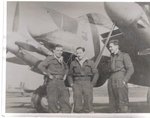Erich
the old Sage
ok Canadian friends, time to do a little research if you would..........
looking for some information on the RCAF 409th Night hawks flying out of Lille in 44 and later into 1945 and what type of Mossie they were equipped with, also the total kills for the unit during WW 2 and flying bombs.
One crew on Dec. 27/28, 1944 claimed 2 Ju 88G's and damaged a third while the German craft were on evening ground attack missions during the Ardenne battles. Anyone have access to those combat reports possibly from the Canadian archiv's or where I could look for these ??
many thanks as usual

Erich ~
looking for some information on the RCAF 409th Night hawks flying out of Lille in 44 and later into 1945 and what type of Mossie they were equipped with, also the total kills for the unit during WW 2 and flying bombs.
One crew on Dec. 27/28, 1944 claimed 2 Ju 88G's and damaged a third while the German craft were on evening ground attack missions during the Ardenne battles. Anyone have access to those combat reports possibly from the Canadian archiv's or where I could look for these ??
many thanks as usual
Erich ~

